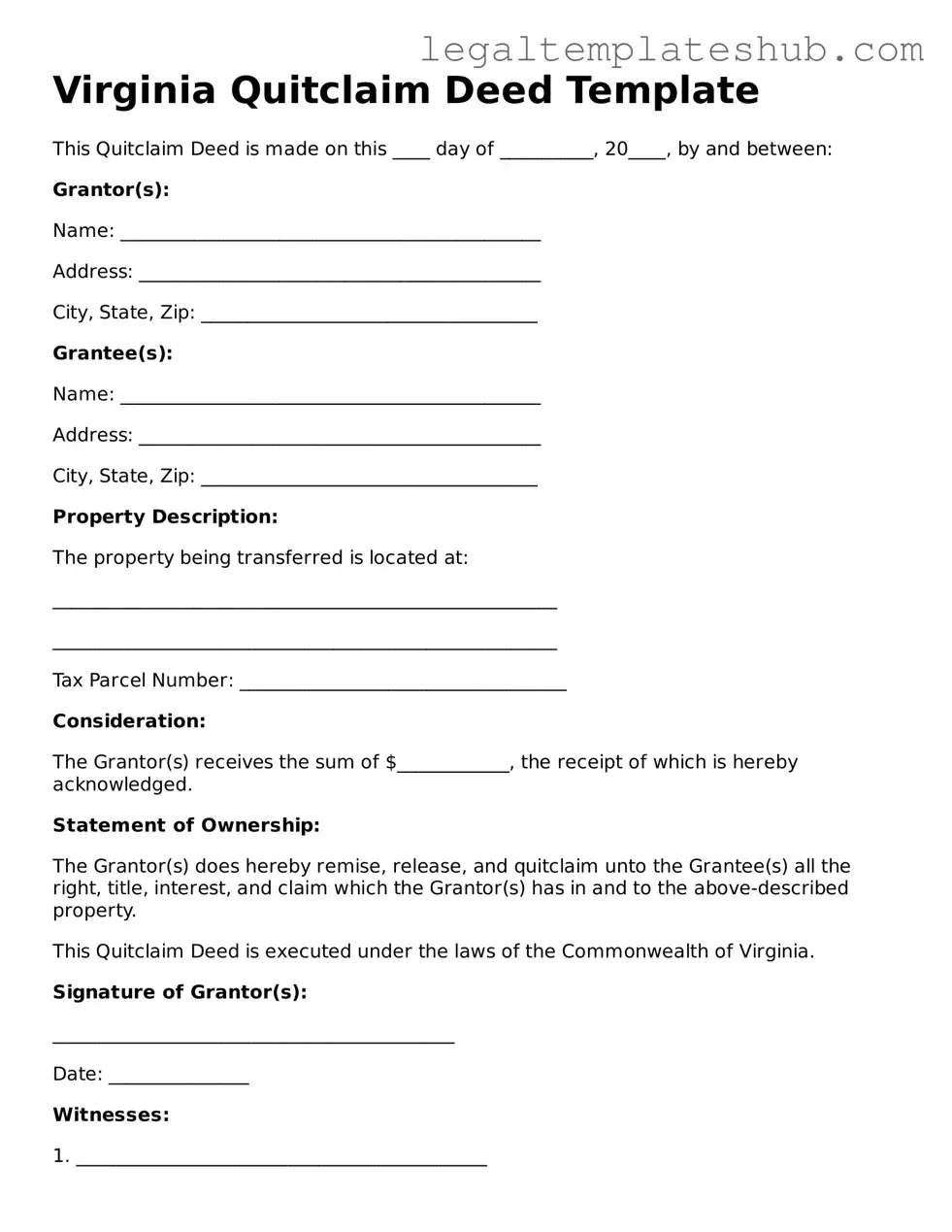Printable Quitclaim Deed Document for Virginia
A Virginia Quitclaim Deed is a legal document used to transfer ownership of real estate from one party to another without any guarantees about the property's title. This form is often utilized when the grantor wants to relinquish their interest in a property, typically among family members or in divorce situations. To start the process of transferring property, fill out the form by clicking the button below.
Access Editor
